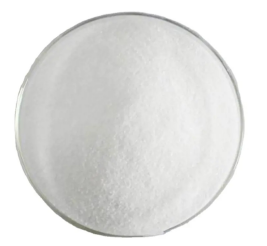
Dec . 01, 2024 12:22 Back to list
Titanium Dioxide Pricing Trends and Supplier Insights for Market Analysis
Analyzing the Titanium Dioxide Price Trends and Supplier Landscape
Titanium dioxide (TiO2) is a vital white pigment and an essential component in various industries, including paints, coatings, plastics, paper, and cosmetics. Its outstanding opacity and brightness make it indispensable for manufacturers worldwide. As with any commodity, the price of titanium dioxide can fluctuate based on a variety of factors, including supply and demand dynamics, raw material costs, environmental regulations, and geopolitical influences. This article aims to provide an overview of the current price trends of titanium dioxide and insights into its supplier landscape.
Over the past few years, titanium dioxide prices have experienced significant volatility. The demand for TiO2 has been primarily driven by the growth in the construction and automotive sectors, which heavily rely on high-quality coatings and finishes. Additionally, the booming global population and urbanization are contributing to an increase in demand for paints and coatings, further impacting the titanium dioxide market. According to recent price charts, the average price of titanium dioxide has seen a steady rise, particularly in regions like North America and Asia.
One of the key drivers behind the price fluctuations of titanium dioxide is the cost of raw materials. The primary substances used in the production of titanium dioxide are ilmenite and rutile, which are derived from mineral ores. Any disruptions in the mining of these ores, whether due to regulatory changes, labor disputes, or logistical challenges, can lead to peaks in TiO2 pricing. For instance, environmental regulations aimed at sustainability can restrict output from key mining sites, thereby tightening supply and elevating prices.
In recent months, the global supply chain for titanium dioxide has faced considerable challenges. The COVID-19 pandemic disrupted transportation and logistics, leading to delays in shipments and increased costs. As economies began to recover, the surge in demand for titanium dioxide outpaced the recovery of supply chains, causing prices to spike. This has put pressure on manufacturers who rely heavily on consistent supply and pricing stability.
When exploring the supplier landscape for titanium dioxide, it is important to recognize the major players in the market. Companies like Chemours, Tronox, and Huntsman are among the leading producers of titanium dioxide worldwide. Their extensive distribution networks and established reputations allow them to maintain a significant market share. However, emerging suppliers, particularly from regions like Asia and Africa, are gradually entering the market, providing competitive pricing and alternative sourcing options.
titanium dioxide price chart supplier

To understand the pricing dynamics better, it is essential to consider the following factors
1. Regional Variations Prices for titanium dioxide can vary significantly across different regions due to varying production costs, local demand, and competitive landscape. Analysis of regional price charts can help businesses make informed purchasing decisions.
2. Technological Advances Innovations in production methods, such as new processes that reduce energy consumption or improve yield, can influence pricing. Suppliers investing in advanced technology might offer more competitive prices.
3. End-User Industries The health of industries reliant on titanium dioxide, such as construction and automotive, impacts demand. A downturn in these sectors can lead to reduced demand and subsequent price declines.
4. Sustainability Trends As environmental concerns grow, manufacturers are increasingly seeking eco-friendly alternatives. Suppliers who can produce titanium dioxide with lower environmental footprints may have an edge in the market.
In conclusion, the titanium dioxide market is characterized by fluctuating prices influenced by multiple factors, including supply chain disruptions, raw material costs, and global demand trends. As companies navigate this complex landscape, understanding the pricing charts and supplier dynamics will be crucial for optimizing procurement strategies and maintaining competitive advantages. With the ever-evolving market conditions, businesses must stay informed and adaptable to ensure sustained growth in their operations.
-
Premium 6618 Titanium Dioxide for GPT-4 Turbo Applications
NewsJul.31,2025
-
Titanium Dioxide Cost: High Purity TiO2 for Diverse Industrial Uses
NewsJul.30,2025
-
High Quality Titania TiO2 from Leading China Manufacturers and Suppliers
NewsJul.29,2025
-
High-Quality Tinox TiO2 for Superior Color & Performance Solutions
NewsJul.29,2025
-
High Quality Titania TiO2 from Leading China Supplier & Manufacturer
NewsJul.29,2025
-
High-Performance r6618 TiO2 for Superior Whitening and Versatility
NewsJul.28,2025
